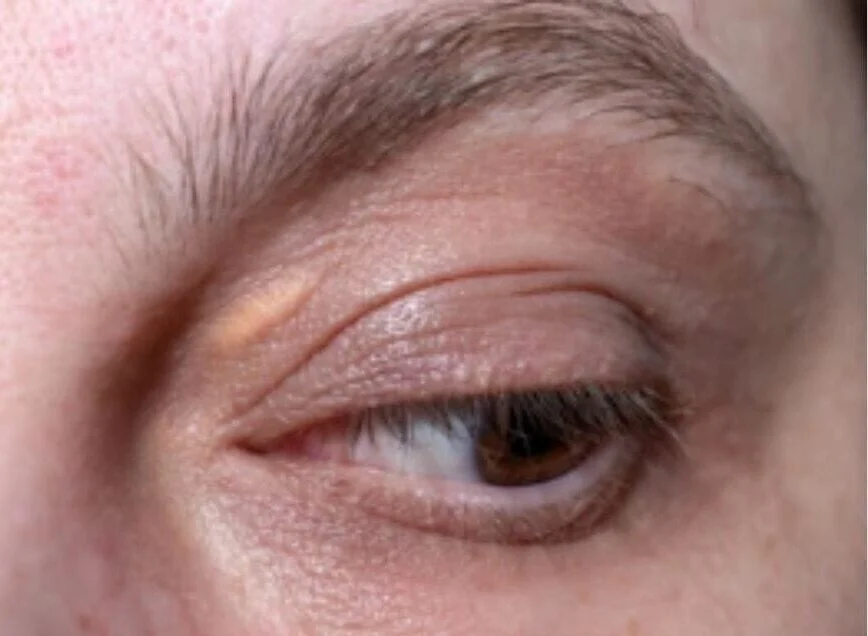
Xanthelasma are yellowish cholesterol deposits that develop under the skin, usually around the eyelids (xanthelasma palpebrarum). Though not harmful or painful, these growths can be disfiguring and are often associated with high cholesterol levels and an increased risk of atherosclerosis. While xanthelasma are primarily a cosmetic concern, they can indicate underlying lipid imbalances in the body. Treatment options include removal by radiofrequency or chemical cauterization. Addressing the underlying cholesterol issue is crucial to prevent recurrence and to manage overall heart health. Regular monitoring of cholesterol levels is recommended to reduce future risks and prevent the growth of new xanthelasma.

Xanthelasma typically presents as soft, yellowish plaques around the eyelids, often appearing symmetrically on both sides. While they are painless, they can grow larger over time and may affect one’s appearance. The presence of xanthelasma is often linked to elevated cholesterol levels, particularly low-density lipoprotein (LDL) cholesterol, and may be an indicator of an increased risk for heart disease and stroke. Risk factors include genetic predisposition, obesity, diabetes, and a poor diet. Prevention involves maintaining a healthy diet, regular exercise, and monitoring cholesterol levels to reduce the risk of recurrence. Early detection and lifestyle changes are essential to managing both cosmetic concerns and overall health.
A1: Xanthelasma is a benign, painless condition where yellowish, cholesterol-rich plaques form around the eyelids. It is not harmful and can be treated for cosmetic purposes if desired.
A2: No, Xanthelasma itself is not dangerous. It’s a cosmetic issue and does not typically affect vision or overall health.
A3: Yes, Xanthelasma can be effectively removed through various methods such as laser treatment, cryotherapy, chemical peels, or minor surgical procedures.
A4: While Xanthelasma may not disappear on its own, maintaining a healthy lifestyle and managing cholesterol levels can prevent its progression.
A5: Sometimes, Xanthelasma is associated with elevated cholesterol levels, but not always. It can serve as an early reminder to check and manage your cholesterol and lipid profile.
A6: Yes, a healthy diet, regular exercise, and avoiding smoking can lower cholesterol levels and reduce the risk of developing Xanthelasma.
A7: Yes, topical treatments, including certain creams and chemical peels, can be effective for some cases, providing non-invasive alternatives to surgery.
A8: No, Xanthelasma is more common in individuals with lipid metabolism disorders, but anyone can develop it. It’s not discriminatory by age, gender, or ethnicity.
A9: Yes, cosmetic products can help temporarily conceal Xanthelasma, making it less noticeable if treatment is not immediately pursued.
A10: While recurrence is possible, it can often be minimized by maintaining healthy cholesterol levels and following a physician’s recommendations post-treatment.
Klarity Skin Clinic, M – 69, First Floor,
M Block Market, Greater Kailash II, New Delhi 110048
Copyright © 2025 All Rights Reserved.
Klarity Skin Clinic is Unit of Acara Wellness Private Limited.